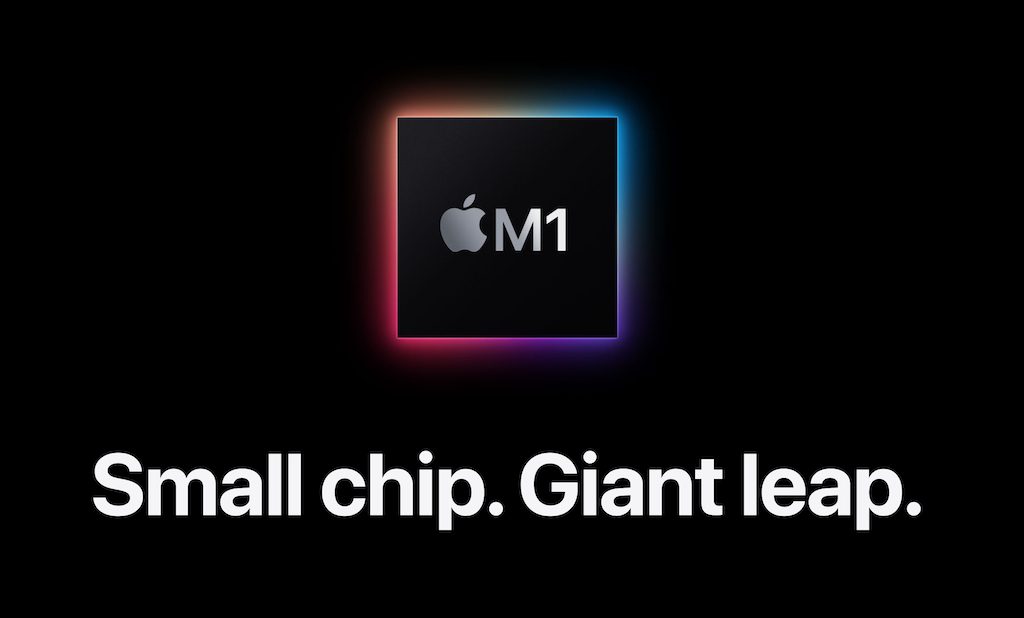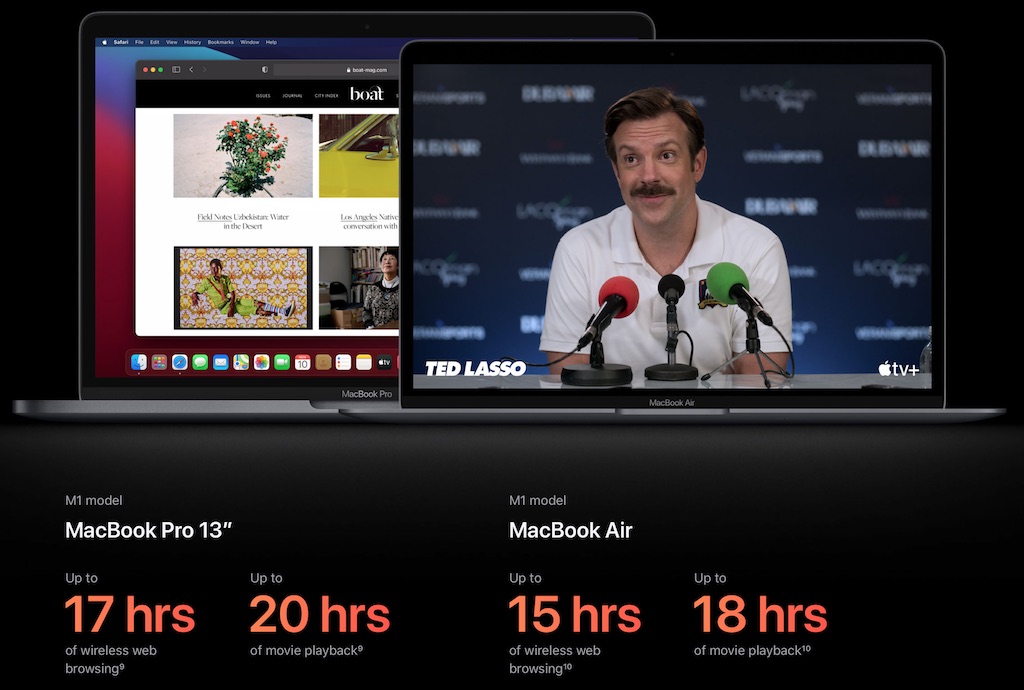
Apple just wrapped up its “One More Thing” event. And it was a blockbuster. A computer industry game-changer. The company has officially begun the move away from Intel to its own ARM-based M1 processors. The first new M1 Macs will be a new MacBook Air, a new 13-inch MacBook Pro, and a new Mac Mini. They look identical to the current models, but under the hood, everything has changed ….
Apple M1 Processor Brings New Level of Performance
After 15 years of equipping its Mac computers with Intel processors, Apple is entering a new era. The company is beginning to roll out computers equipped with its own M1 processors. These custom, ARM-based processors are 5nm chips that are designed to deliver new levels of performance and power efficiency.
The M1 processor has four high-speed CPU cores paired with four high-efficiency cores. There is also an integrated GPU (up to eight cores). The M1 also features a 16-core Neural Engine, Thunderbolt, USB 4 support, and chip-level video encoding/decoding with 4K support, and security. This integrated SoC (System on a Chip) design is more efficient, reducing latency when data is copied between different chips.
Apple says that with 2.6 teraflops of throughput, the M1 has the world’s fastest integrated graphics in a personal computer.
How big a difference does the M1 chip make? Using the new 13-inch MacBook Pro as an example, Apple says it will offer up to 20 hours of video playback, compared to 10 hours on the last Intel-based model. Apple says the new M1-powered Macbook Pro is up to 2.8 times faster than the previous generation, with up to five times the graphics performance.

Like the iPhone or iPad
Why is Apple making the switch to its own M1 processors? Look no further than the success it’s had with the A-series chips used by the iPhone and iPad. They not only offer a powerful punch, but by being in control of both the processor and the operating system, Apple is able to offer even better performance.
Apple says macOS 11 Big Sur has been optimized to take full advantage of the new M1 processors, including instant wake-from-sleep.
And speaking of iPhones and iPads, by moving to the ARM-based M1 processor, Macs and MacBooks will now be able to run iOS apps. All Apple-released apps are now Universal, able to run on an M1 Mac natively. This opens up a whole new world of applications for Mac owners.
Should I worry about buying a new or existing Mac or MacBook?
It can be scary to consider buying a new computer when the company is beginning such a massive transition. Will the new models based on the new processors live up to expectations? Will the existing models based on the old chips be left in the dirt? Will software stop working?
Those are all legitimate questions. However, I have faith that Apple will pull this off pretty seamlessly. I was around when the company did this 15 years ago, beginning to transition its PowerPC-based Macs to Intel chips. The company did a good job of making that transition relatively painless for owners. Lessons learned from that round are being applied in the transition from Intel to ARM-based M1 processors.
It won’t happen instantly, so there will be two years where Apple is openly supporting both Intel and M1 Macs. Software emulation has come a long way, and Apple’s Rosetta 2 will ensure older apps continue to seamlessly run on new M1 Macs—even if they haven’t been updated to Universal apps.
So enjoy your current Mac or MacBook, they’ll still be great computers for years to come. If you’re in a position to buy a new M1 MacBook Air, 13-inch MacBook Pro or Mac Mini, I’m a little envious—they look like pretty amazing machines.
When can I order a new M1-powered Mac?

Very soon! Once Best Buy has the SKUs from Apple, the links for the new MacBook Air, 13-inch MacBook Pro, and Mac Mini will be updated on this post and we’ll also update when you can expect the products to be available.



